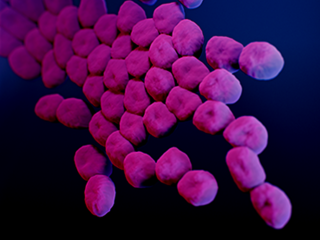Quantitative and Evolutionary Ecology of Communities Group
Members

Doctorante
UCBL

Professeure des universités
VetAgro-Sup
Tel: 33 04 72 43 27 56

Directeur de recherche
CNRS
Tel: 33 04 72 43 27 57

Doctorant
UCBL
Tel: 04 72 44 81 42

Doctorant
CNRS
Tel: 04 72 44 81 42
Doctorant
VetAgro-Sup

Maître de conférences
UCBL
Tel: 04 72 44 81 42
Doctorant
UCBL


Professeur des universités
UCBL
Tel: 33 04 72 43 27 56

Professeur des universités
UCBL

Directeur de recherche
CNRS
Tel: 33 04 72 43 27 56

Maîtresse de conférences
UCBL
Tel: 33 04 72 43 29 02
Maître de conférences
UCBL
Tel: 33 04 72 43 29 02

Our research activities, focused on interspecific interactions (community ecology), aim to better understand the ecological and evolutionary processes structuring species assemblages and biodiversity at different temporal and spatial scales. Our team addresses these major issues using contrasting biological models (communities of large African mammals, insects, microbiota, plants) from 3 complementary angles:
- Our work is strongly anchored in the conceptual framework of evolutionary biology by studying (i) the diversity of adaptive responses implemented by organisms to selective pressures in their environment, (ii) their consequences on population demography and ultimately (iii) the dynamics and composition of species communities.
- Our research is closely linked to societal issues of biodiversity conservation and management by integrating both the functioning of socio-ecological systems and the context of climate change. We conduct experimental studies, manage and ensure the long-term monitoring of several community observation networks.
- Methodological issues also occupy a central place in our team, with the development of new tools for statistical processing and modeling of ecological data. This activity leads to the development of methods and software that we develop and distribute freely.
Research programs

Functioning of African savanna communities
The Hwange LTSER (Long-Term Socio-Ecological Research site in Zimbabwe hosts a long-term interdisciplinary research program that focuses on the functioning of plant and animal communities within the Hwange National Park and the interactions between this protected area and humans living in its periphery. Based on this program, three axes are developed: (1) studying the population dynamics of elephants, exploring their impact and that of management policies on the socio-ecosystem functioning; (2) Understanding the extent to which interactions within and between trophic levels are sensitive to management actions (e.g. sport hunting, water management) and climate change; (3) Decoding human ecology and human-wildlife coexistence mechanisms towards integrated conservation and sustainable functioning of the socio-ecosystem. This research is complemented by more recent works in the Hluhluwe-iMfolozi Park and in the Madikwe reserve in South Africa, which focus on the role of environmental conditions on the hunting success of large African carnivores. We work in close collaboration with the IRL (International Research Lab) Rehabs.
Involved group members : Alice Bernard, Laura Lacomme, Aïssa Morin, Lisa Nicvert, Elie Pedarros, Yolan Richard, Marion Valeix*

Masting and the community dynamics of seed consumers
Masting is a reproductive strategy often encountered in perennial plants, characterized by fructifications highly fluctuating in time and being synchronized at the population level. The seeds produced that way constitute a pulsed resource with a strong impact on the eco-evolutionary dynamics of seed-consuming communities and forest regeneration. Our lack of knowledge of this system still impedes our understanding of the dynamics of temperate forest ecosystems and its future in the context of climate change. Our work carried out on oak forests aims to better understand (i) the proximal causes of masting, (ii) the mechanisms underlying the coexistence of species competing for such highly fluctuating resource and (iii) the co-evolution of consumer exploitation strategies for the fluctuating resource and forest tree fruiting strategies. On the basis of the results obtained, scenarii will be proposed on the future of forest regeneration under climate change, that may serve forest management.
Involved group members : Marie-Claude Bel-Venner*, Emilie Fleurot, Léa Keurinck, Jean Lobry, Samuel Venner

The spread of antibiotic resistance genes in bacteria
Antibiotic resistance is recognized as one of the greatest current threats to human health, and the mobile genetic elements (MGEs) that circulate in bacterial populations and communities are the main vehicles. To understand the dynamics and diversity of MGEs in bacterial pangenomes and the emergence of antibiotic resistance genes, we propose to go beyond the framework of conventional genomics by considering pangenomes as complex ecological communities. In the Ab-One program, we mobilize the concepts and tools developed in community ecology based on an integrative approach (monitoring of bacterial populations/communities evolving in contrasting environments -One-Health approaches-, pan-genomic analyses, experimentation in molecular and cellular microbiology, mathematical modelling). This program is currently focused on the dynamics of MGEs in Acinetobacter baumannii, an antibiotic-resistant microorganism classified as a priority by the WHO. Other more general approaches will illustrate the relevance of this new conceptual framework to understand the dynamics and diversity of MGEs in bacterial pangenomes. This program, co-piloted by our team and a team from CIRI (Horigene) involves the participation of 9 organizations (6 from Lyon -LBBE, CIRI, MMSB, HCL, LEM, VetAgro Sup-, Institut Pasteur (Paris), LMGM (Toulouse ), Robert Koch Institute (Germany)).
Involved group members : Stéphane Dray, Rémi Tuffet, Samuel Venner*

Statistical analysis of ecological data
Understanding the structure and dynamics of species assemblages, and the processes behind them, requires collecting data that are becoming increasingly complex owing to the sophisticated technological developments made available for their acquisition (e.g. GPS, loggers, satellite imagery, molecular data). We are developing new methods for analysing such data, that provide new insights into the ecological processes at work in communities. Multivariate analysis methods allow the analysis of spatial structures, accounting for various information on species (functional traits, morphology, phylogeny), the spatio-temporal variation of species-environment relationships or the multifaceted perception of the protected human-environment relationship. We also model multi-'omics' dose-response data within communities in order to better understand the Adverse Outcome Pathway (AOP) and to better appreciate the risks to the environment. These methodological innovations are made available to the scientific community through the development, distribution and maintenance of software (libraries for the R language: ade4, adegraphics, adephylo, ade4TkGUI, nlstools, fitdistrplus, DRomics, seqinr).
Involved group members: Marie Laure Delignette-Muller, Stéphane Dray*, Jean Lobry, Jean Thioulouse.
Publications
Display of 361 to 390 publications on 656 in total
Assessing species and community functional responses to environmental gradients: which multivariate methods?
Journal of Vegetation Science . 23 : 805--821
Journal article
see the publicationDisentangling plant trait responses to livestock grazing from spatio-temporal variation: the partial RLQ approach
Journal of Vegetation Science . 23 : 98-113
Journal article
see the publicationPredator-prey spatial game as a tool to understand the effects of protected areas on harvester-wildlife interactions
Ecological Applications . 22 : 648-657
DOI: 10.1890/11-0422.1
Journal article
see the publicationAssessing the effects of spatial contingency and environmental filtering on metacommunity phylogenetics
Ecology . 93 : S14-S30
DOI: 10.1890/11-0494.1
Journal article
see the publicationImproved testing of species traits-environment relationships in the fourth-corner problem
Ecology . 93 : 1525--1526
DOI: 10.1890/12-0126.1
Journal article
see the publicationSpatial processes driving soil microbial community assembly on a wide scale
4. International Congress Eurosoil 2012 - Soil Science for the Benefit of Mankind and Environment .
Conference paper
see the publicationA handbook for uncovering the complete energetic budget in insects: the van Handel's method (1985) revisited
Physiological Entomology . 37 ( 3 ) : 295-302
Journal article
see the publicationComparison of bioassays with different exposure time patterns: The added value of dynamic modelling in predictive ecotoxicology
Ecotoxicology and Environmental Safety . 75 : 80-86
Journal article
see the publicationFitting a lognormal distribution to enumeration and absence/presence data
International Journal of Food Microbiology . 155 ( 3 ) : 146 - 152
Journal article
see the publicationModeling of Clostridium perfringens vegetative cell inactivation in beef-in-sauce products: A meta-analysis using mixed linear models
International Journal of Food Microbiology . 154 : 44-51
Journal article
see the publicationSurvival data analyses in ecotoxicology: critical effect concentrations, methods and models. What should we use?
Ecotoxicology . 21 : 1072--1083
Journal article
see the publicationAnalyse de (K+1) tableaux avec le logiciel ade4. Application en épidémiologie.
1ères Rencontres R .
Conference paper
see the publicationVisualisation de données multivariées: réimplémentation des fonctionnalités graphiques de la librairie ade4
1ères Rencontres R .
Conference paper
see the publicationHow to measure and test phylogenetic signal
Methods in Ecology and Evolution . 3 : 743-756
Journal article
see the publicationThe Harttiini (Siluriformes, Loricariidae) from the Guianas: a multi-table approach to assess their diversity, evolution, and distribution
Cybium : Revue Internationale d’Ichtyologie . 36 ( 1 ) : 115-161
Journal article
see the publicationCommunity ecology in the age of multivariate multiscale spatial analysis
Ecological monographs . 82 ( 3 ) : 257 - 275
DOI: 10.1890/11-1183.1
Journal article
see the publicationEquation or algorithm: differences and choosing between them
Acta Biotheoretica . 59 ( 1 ) : 67-79
Journal article
see the publicationHow does herbivory affect individuals and populations of the perennial herb Paeonia officinalis ?
Flora . 206 ( 6 ) : 544-549
Journal article
see the publicationContinental-scale patterns of Cecropia reproductive phenology: evidence from herbarium specimens
Proceedings of the Royal Society B: Biological Sciences . 278 ( 1717 ) : 2437-2445
Journal article
see the publicationLarge trends in French topsoil characteristics are revealed by spatially constrained multivariate analysis
Geoderma . 161 : 107-114
Journal article
see the publicationDiversity, Geographic Distribution, and Habitat-Specific Variations of Microbiota in Natural Populations of the Chicken Mite, Dermanyssus gallinae
Journal of Medical Entomology . 48 ( 4 ) : 788-796
DOI: 10.1603/ME10113
Journal article
see the publicationNurse shrubs increased the early growth of Cupressus seedling by enhancing belowground mutualism ans doil microbial activity
Soil Biology and Biochemistry . 43 ( 10 ) : 2160-2168
Journal article
see the publicationBiogeographical patterns of soil molecular microbial biomass as influenced by soil characteristics and management
Global Ecology and Biogeography . 20 : 641-652
Journal article
see the publicationSIMULTANEOUS ANALYSIS OF A SEQUENCE OF PAIRED ECOLOGICAL TABLES: A COMPARISON OF SEVERAL METHODS
Annals of Applied Statistics . 5 ( 4 ) : 2300-2325
DOI: 10.1214/10-AOAS372
Journal article
see the publicationBayesian modelling of daphnid responses to time-varying cadmium exposure in laboratory aquatic microcosms
Ecotoxicology and Environmental Safety . 74 ( 4 ) : 693-702
Journal article
see the publicationThe importance of incorporating age and sex when backcalculating length in bullhead Cottus gobio
Journal of Fish Biology . 78 : 1492-1507
Journal article
see the publicationThe Nile monitor (Varanus niloticus; Squamata: Varanidae) as a sentinel species for lead and cadmium contamination in sub-Saharan wetlands.
Science of the Total Environment . 409 : 4735-4745
Journal article
see the publicationBayesian modeling of Clostridium perfringens growth in beef-in-sauce products
Food Microbiology . 28 : 311-320
Journal article
see the publicationEstimating the Number of Contributors to Forensic DNA Mixtures: Does Maximum Likelihood Perform Better Than Maximum Allele Count?
Journal of Forensic Sciences . 56 ( 1 ) : 23-28
Journal article
see the publicationBiogeography of soil microbial communities: a review and a description of the ongoing french national initiative
Sustainable Agriculture Volume 2 . 978-94-007-0393-3 : 857-865
Book chapter
see the publication
You also, comment on this article